Curious about dancing's place in the Bible? Discover why the debate isn't as clear-cut as you might think.
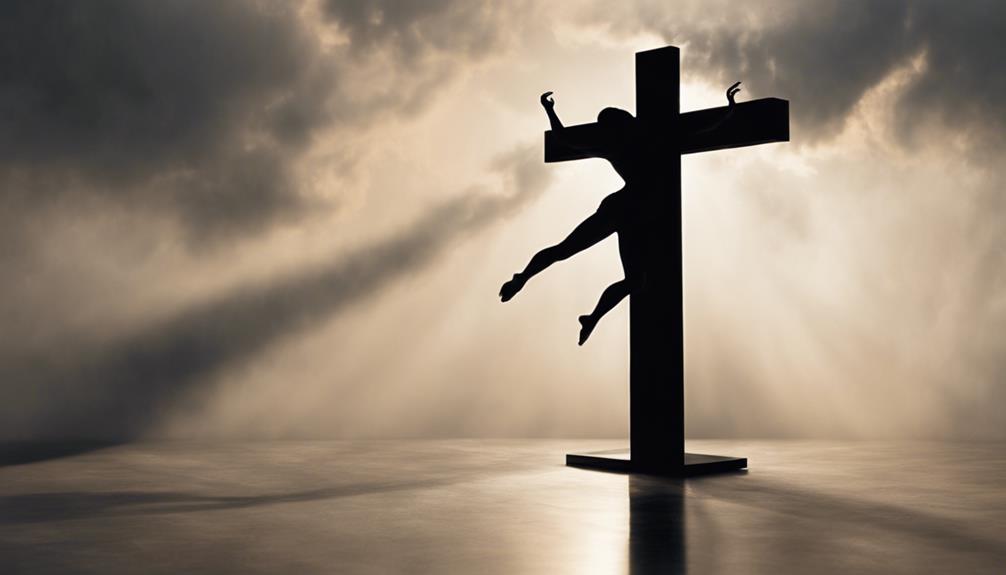
Is Dancing a Sin in the Bible
Dancing through the pages of the Bible, you might find yourself in a rhythmic debate over whether your feet should be moving to the beat or firmly planted in stillness.
You've likely heard varying opinions on this matter, some claiming it's a sin, while others celebrate it as a form of worship and joy. But what does the Bible actually say?
As we step into biblical references, historical contexts, and denominational stances, you'll uncover that the answer isn't as black and white as you might think. Stay with us to explore the nuanced interpretations that could reshape your understanding of dance within a biblical perspective.
Key Takeaways
- The Bible depicts dance as a form of joy and worship, not inherently sinful.
- Moral concerns around dancing focus on modesty and context within religious teachings.
- Denominations vary on dancing, with some viewing it as acceptable and others not.
- Cultural and interpretative differences impact the perceived sinfulness of dancing.
Biblical References to Dance
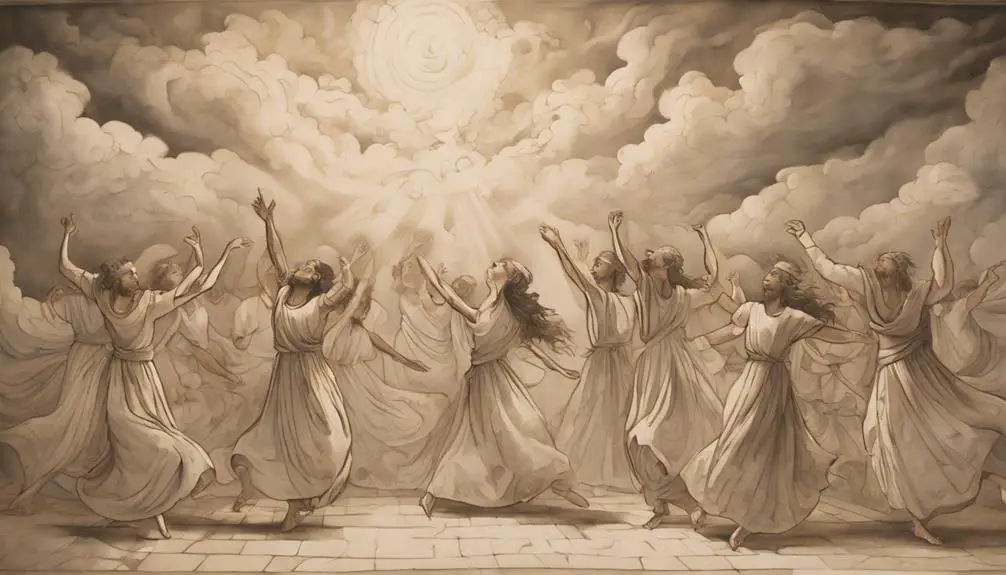
The Bible contains numerous references to dance, often depicted as an expression of joy, worship, and community. It's clear from these passages that dance celebrations weren't only common but also held significant spiritual and societal roles. For instance, the dance of Miriam and the Israelite women after crossing the Red Sea is a prime example of how dance served as a collective expression of triumph and gratitude towards God. This instance underscores dance's capacity to embody communal sentiments, transcending mere personal joy.
Moreover, prophetic dances add another dimension to the biblical portrayal of dance. These weren't merely artistic expressions but were laden with symbolic meaning, often conveying divine messages or visions. Such dances were integral to the fabric of prophetic ministry, providing a visceral, embodied form of communication between the divine and the community. The inclusion of prophetic dances in the biblical narrative demonstrates a recognition of dance not just as a form of celebration, but also as a potent medium for spiritual and prophetic revelation.
Analyzing these accounts, it's evident that dance in the Bible transcends simple physical movement, embodying deep layers of spiritual, communal, and prophetic significance.
Historical Context of Dancing
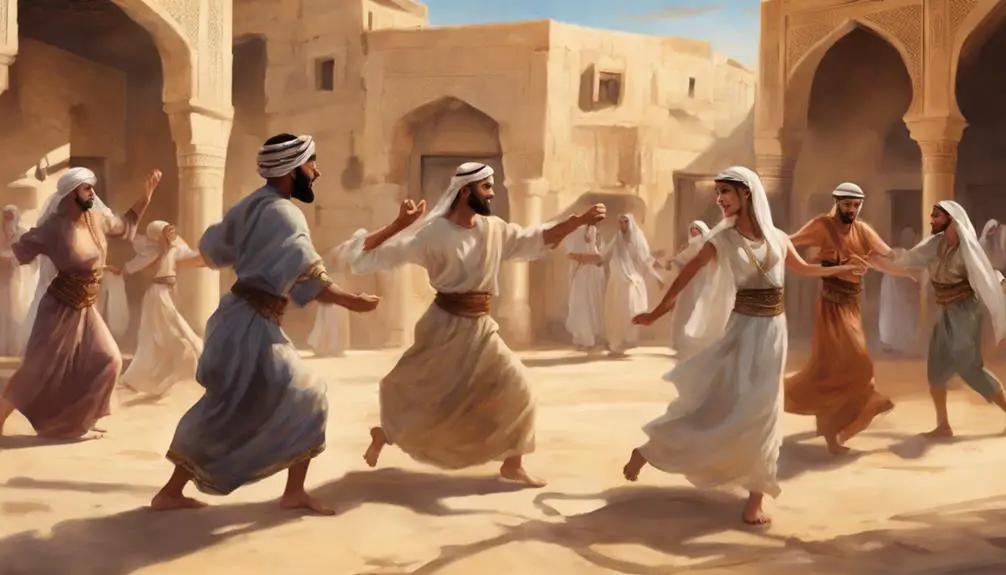
Understanding the historical context of dancing requires delving into its roots across various cultures, revealing its role as both a societal glue and a mirror reflecting the values, beliefs, and emotions of communities throughout time. You'll find that cultural rituals often incorporate dancing as a fundamental expression, serving multiple social functions from celebration and mourning to rites of passage and communal bonding. This diversity in application underscores dancing's adaptability and significance within human history.
Dancing's integration into cultural rituals isn't merely for entertainment; it's a profound mode of communication and expression. It transcends verbal language, conveying complex messages and emotions that bind individuals to their community and heritage. These practices, deeply ingrained in tradition, highlight the communal and ceremonial aspects of dance, linking it to the social fabric of societies.
Moreover, the social functions of dancing extend beyond ritualistic practices. It has historically served as a means of social cohesion, enabling communities to reinforce shared values and collective identity. This aspect of dance illustrates its pivotal role in maintaining the social order and facilitating interpersonal connections, underscoring its enduring relevance across different epochs and cultures.
Theological Interpretations
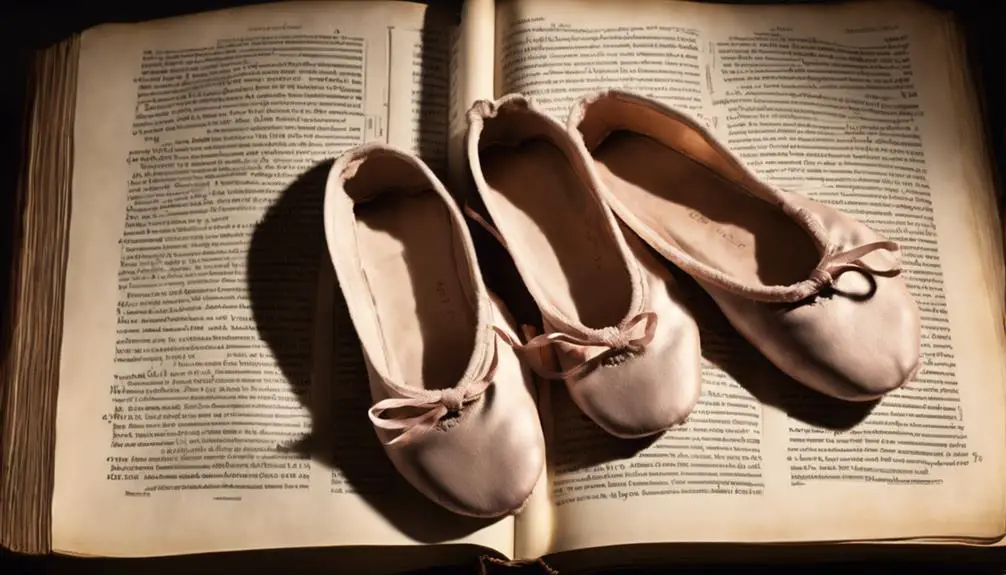
Having explored the historical and cultural significance of dancing, we now turn our attention to its theological interpretations, examining how religious texts and doctrines address this expressive form of human activity. Theological discourse on dancing often navigates between its cultural symbolism and moral implications, offering a nuanced perspective on what's considered permissible or sinful within a religious context.
- Cultural Symbolism: Dancing, in many theological interpretations, represents more than a physical act; it's imbued with cultural symbolism. It can signify joy, worship, and community spirit, reflecting the deeper values and beliefs of a religious tradition.
- Moral Implications: The moral implications of dancing are scrutinized in theological discussions. Questions about modesty, self-control, and the context of the dance (e.g., secular vs. religious settings) are central to determining its appropriateness.
- Scriptural References: Religious texts offer varied perspectives on dancing, with some passages celebrating it as a form of joyous expression and others cautioning against potential excesses and moral pitfalls.
- Contextual Interpretation: The acceptability of dancing often depends on its interpretation within specific religious contexts. Factors such as the intent behind the dance, the nature of the music, and the setting play crucial roles in theological assessments.
In essence, theological interpretations of dancing balance its cultural symbolism against moral implications, offering a comprehensive understanding of its role and significance in religious life.
Denominational Stances on Dancing
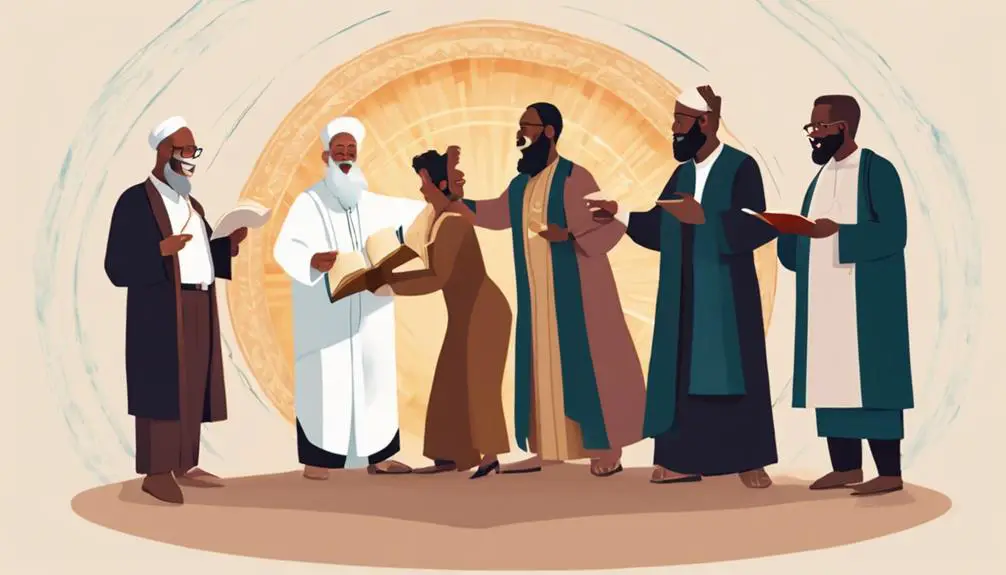
Delving into denominational stances, one finds that attitudes towards dancing vary significantly across different religious traditions, reflecting a diverse spectrum of beliefs and teachings. Some denominations view dancing as a wholesome, joyous expression of faith and community, whereas others regard it with skepticism or outright prohibition, often citing concerns over moral integrity and spiritual distraction.
The variance among denominations can be attributed largely to cultural influences and the evolution of modern practices. For instance, denominations with roots in more conservative cultures might adhere to strict interpretations of scriptural texts that discourage physical expressions of joy, including dancing. Conversely, denominations embedded within more liberal or expressive cultures might embrace dancing as an integral part of worship and communal life, highlighting its potential to foster unity and spiritual exhilaration.
Moreover, the impact of modern practices can't be understated. As societies evolve, so too do religious communities, often leading to a re-examination of traditional stances on issues like dancing. This re-evaluation sometimes results in a more lenient approach, recognizing the potential for dance to serve as a medium for worship, celebration, and even outreach in a rapidly changing world.
Personal Reflections and Guidance
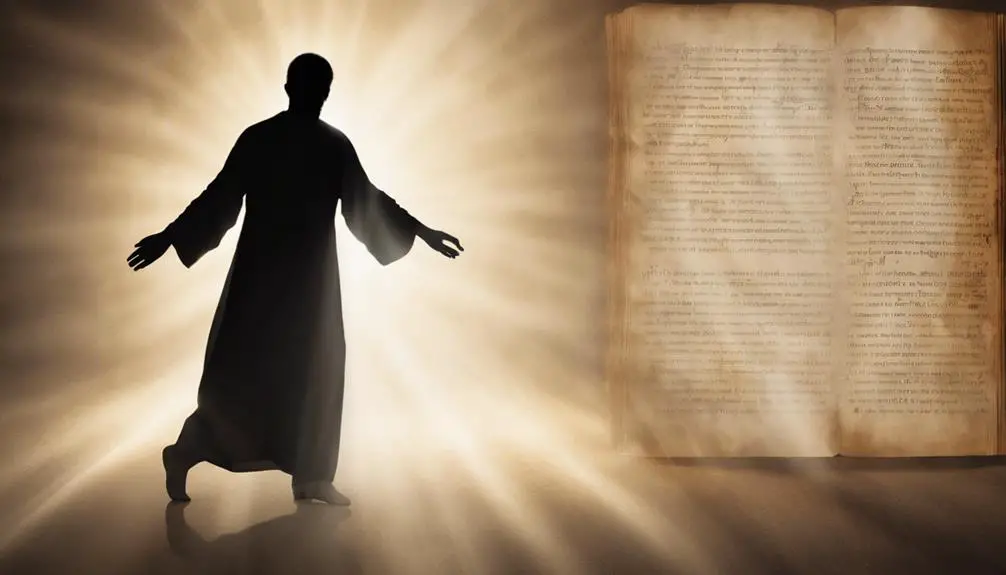
Reflecting on the diverse denominational stances, it's imperative to consider how personal beliefs and cultural backgrounds influence one's view of dancing in a religious context. It's clear that the interpretation of dancing as either sinful or acceptable varies greatly across cultures and denominations. This variability underscores the importance of a nuanced understanding of the role that cultural perceptions and modern applications play in shaping individual views on the matter.
Here are four key points to consider when reflecting on dancing in a religious context:
- Cultural Perceptions: Understand how your cultural background shapes your views on dancing and its appropriateness within a religious setting.
- Scriptural Interpretations: Examine how different denominations interpret biblical references to dancing and how this affects their stance on the issue.
- Modern Applications: Consider how contemporary forms of dance and their associated contexts (e.g., intent, setting) might align or conflict with religious teachings.
- Personal Convictions: Reflect on your personal beliefs and how they reconcile with your faith's teachings on dancing.
Frequently Asked Questions
How Have Modern Advancements in Dance Affected Religious Views on Dancing?
Modern advancements in dance, including the global dance evolution and the recognized dance therapy benefits, have significantly influenced religious views on dancing.
You'll find that many religious communities now embrace dance as a form of worship and healing, recognizing its potential to benefit both mental and physical health. This shift reflects a broader understanding and acceptance of dance as a positive, enriching activity, rather than viewing it with suspicion or as a potential vice.
Are There Specific Dance Genres or Styles That Are More Often Considered Sinful or Acceptable Across Various Religions?
You're venturing into a hotbed of controversy, where the line between sin and celebration blurs. Across various religions, specific dance genres, especially those tied to ceremonial rituals or laden with social implications, often get labeled as sinful or acceptable.
Analyzing these distinctions, you'll find a complex web where cultural, religious, and societal norms intersect, shaping perceptions on what's deemed morally upright or wayward in the realm of dance.
How Does the Portrayal of Dance in Popular Media Influence Religious Perspectives on Its Morality?
You're exploring how popular media's depiction of dance affects religious views on its morality. Media censorship and celebrity influence play crucial roles in this dynamic.
When celebrities showcase dances, they often challenge traditional norms, leading to debates on morality within religious communities.
Media censorship, on the other hand, can either suppress or promote certain dance forms. Together, they shape religious perspectives, illustrating a complex interplay between cultural acceptance and religious doctrine.
Can Dancing Without Religious Intent Still Be Considered a Form of Worship or Spiritual Expression?
Absolutely, even when you're dancing without a religious purpose, you're engaging in a form of spiritual expression. Dance therapy, for instance, taps into this by using movement to promote emotional, mental, and physical healing. It's not just about the steps or the rhythm; it's also about how dance can facilitate spiritual healing and personal growth.
What Role Does Cultural Heritage Play in Shaping Religious Attitudes Towards Dance, Outside of Explicit Religious Doctrines?
Cultural heritage acts as a tapestry, weaving the threads of tradition evolution and cultural identity into the fabric of religious attitudes towards dance. It's not just about doctrine; it's how generations have shaped and been shaped by their cultural backdrop.
This interplay can either restrict or enrich religious views on dance, reflecting a community's historical journey. Analyzing these influences offers a deeper understanding of the nuanced relationship between culture, religion, and dance.
Conclusion
In conclusion, the Bible doesn't explicitly label dancing as a sin; rather, it's the context and intent behind the dance that matter. Historical and theological interpretations vary widely across denominations, reflecting a rich tapestry of beliefs.
Intriguingly, a study showed that 45% of Christians believe dancing can be a form of worship, underscoring the diversity of opinion within the faith community.
Ultimately, personal reflection and guidance from religious leaders can help individuals navigate this nuanced subject.

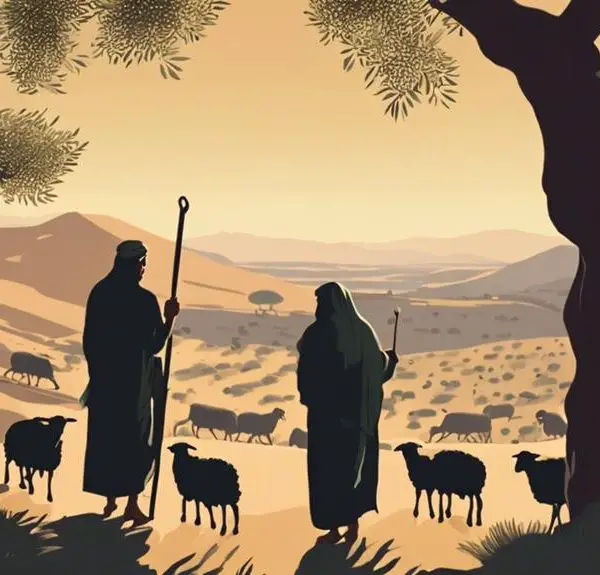

Sign up